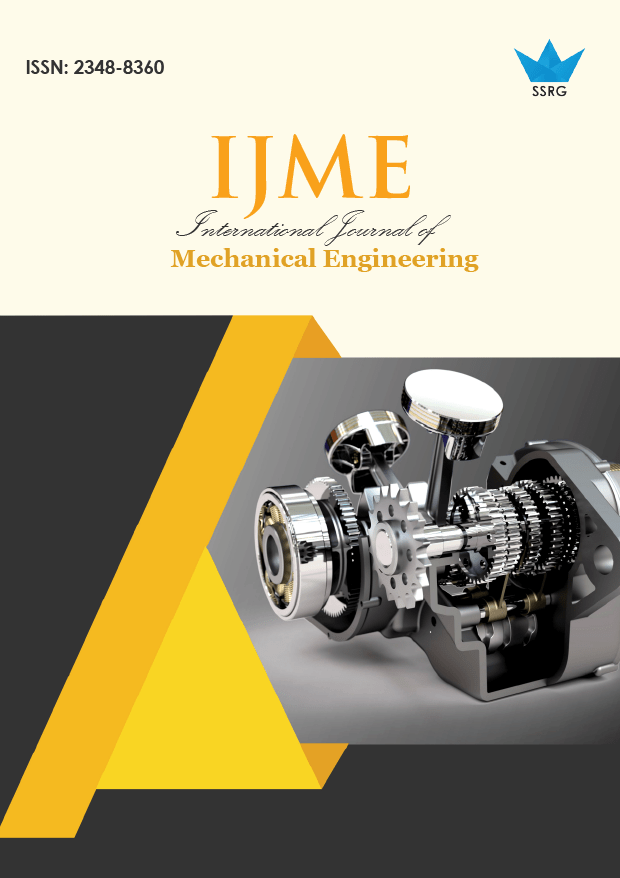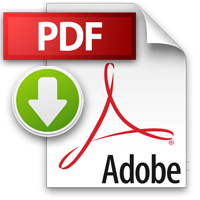Neuro-QFLC: A Hybrid Neural-Fuzzy Framework for EHD Thermal Regulation under Joule Heating Constraints

| International Journal of Mechanical Engineering |
| © 2025 by SSRG - IJME Journal |
| Volume 12 Issue 10 |
| Year of Publication : 2025 |
| Authors : M. Lavanya, S. Mathankumar |
How to Cite?
M. Lavanya, S. Mathankumar, "Neuro-QFLC: A Hybrid Neural-Fuzzy Framework for EHD Thermal Regulation under Joule Heating Constraints," SSRG International Journal of Mechanical Engineering, vol. 12, no. 10, pp. 10-21, 2025. Crossref, https://doi.org/10.14445/23488360/IJME-V12I10P102
Abstract:
Electrohydrodynamic (EHD) convection systems offer significant potential for enhancing heat transport through electric body forces; however, Joule heating introduces nonlinear complexities that degrade performance. This paper proposes Neuro-QFLC, a hybrid real-time control framework that integrates a Quantum Fuzzy Logic Controller (QFLC) with a physics-informed Neural Surrogate Model to regulate EHD-enhanced thermoconvection. The neural surrogate, trained on Finite Difference Method (FDM) simulation data, provides rapid flow, charge density, and thermal fields predictions, enabling fast and accurate control updates. The QFLC employs quantum-inspired membership functions and optimized rule activation to adaptively adjust electric field inputs and fluid flow in response to entropy generation, Nusselt number variations, and thermal gradients. Extensive numerical evaluations demonstrate that Neuro-QFLC achieves substantial performance improvements over baseline EHD systems and conventional controllers. Specifically, the framework delivers a 12.1% increase in average Nusselt number, a 21.7% reduction in entropy generation, and a 22% decrease in energy input, while reducing convergence time by 34%. Additional tests confirm its robustness concerning grid sensitivity, Rayleigh amount variations, and dielectric disturbances. Compared to PID, besides classical fuzzy controllers, Neuro-QFLC exhibits superior stability, adaptability, and computational efficiency.
Keywords:
Electrohydrodynamic convection system, Quantum Fuzzy Logic Control, Finite Difference Method, Membership function, Fluid flow, Electric field.
References:
[1] V. Navaneethakrishnan, M. Muthtamilselvan, and Eunseop Yeom, “Impact of Electro-Hydrodynamics on Combined Convection in an Opposed Ventilation System,” Physics of Fluids, vol. 36, no. 9, 2024.
[CrossRef] [Google Scholar] [Publisher Link]
[2] Yuxing Peng et al., “Numerical Analysis of Electro-Thermo-Convection in a Differentially Heated Square Cavity with Electric Conduction,” Physica Scripta, vol. 98, no. 11, 2023.
[Google Scholar] [Publisher Link]
[3] Di-Lin Chen et al., “Electro-thermo-hydrodynamics of Polymer Viscoelastic Fluids with Heat Transfer and Dynamic Properties,” Computational and Experimental Simulations in Engineering, pp. 947-961, 2024.
[CrossRef] [Google Scholar] [Publisher Link]
[4] R. Deepak Selvakumar, and Hyoungsoon Lee, “Thermal Boundary Layer Depletion in Minichannels by Electrohydrodynamic Conduction Pumping,” Applied Thermal Engineering, vol. 230, 2023.
[CrossRef] [Google Scholar] [Publisher Link]
[5] Kun He, Yong Zhao, and Lei Wang, “Numerical Investigation on Electrohydrodynamic Enhancement of Solid–Liquid Phase Change in Three-Dimensional Cavities,” International Journal of Multiphase Flow, vol. 168, 2023.
[CrossRef] [Google Scholar] [Publisher Link]
[6] Chedlia Mhedhbi et al., “Numerical Investigation of Heat Transfer Enhancement in Dielectric Fluids through Electro-Thermo-Capillary Convection,” Case Studies in Thermal Engineering, vol. 55, pp. 1-14, 2024.
[CrossRef] [Google Scholar] [Publisher Link]
[7] Ming Gao et al., “Comparative Investigation of Numerical Simulation and Experimental Study of Electroconvection Layer in Natural Convection Heat Transfer Enhanced by an Electric Field,” International Communications in Heat and Mass Transfer, vol. 153, 2024.
[CrossRef] [Google Scholar] [Publisher Link]
[8] Zhonglin Du, Pedro A. Vázquez, and Jian Wu, “Electro-Thermo-Convection in a Planar Layer of Dielectric Liquid Subjected to Electrohydrodynamic Conduction and Thermal Gradient,” 2023 IEEE 22nd International Conference on Dielectric Liquids (ICDL), Worcester, MA, USA, pp. 1-6, 2023.
[CrossRef] [Google Scholar] [Publisher Link]
[9] Di-Lin Chen et al., “Assisted Heat Transfer Enhancement in Non-Newtonian Dielectric Fluids Based on ion Conduction Phenomena,” Physics of Fluids, vol. 35, no. 11, pp. 1-19, 2023.
[CrossRef] [Google Scholar] [Publisher Link]
[10] An Li et al., “Heat Transfer Performance and Electrohydrodynamic Characteristics Optimization of a Dividing-Wall-Type Ionic Wind Heat Exchanger,” International Journal of Heat and Mass Transfer, vol. 228, 2024.
[CrossRef] [Google Scholar] [Publisher Link]
[11] Qi Wang, Yifei Guan, and Jian Wu, “Enhanced Heat Transfer and Symmetry Breaking in Three-Dimensional Electro-Thermo-Hydrodynamic Convection,” Proceedings of the Institution of Mechanical Engineers, Part C: Journal of Mechanical Engineering Science, vol. 237, no. 11, pp. 2549-2560, 2023.
[CrossRef] [Google Scholar] [Publisher Link]
[12] Ahmed Hassan, and James S. Cotton, “An Investigation of the Electroconvection Flow and Solid Extraction during Melting of Phase-Change Materials,” Journal of Electrostatics, vol. 128, 2024.
[CrossRef] [Google Scholar] [Publisher Link]
[13] Junyu Huang et al., “Numerical Study of Electro-Convection between Annular Electrodes Based on a Dissociation-Injection Mechanism,” European Journal of Mechanics-B/Fluids, vol. 100, pp. 82-98, 2023.
[CrossRef] [Google Scholar] [Publisher Link]
[14] James Donnelly, Alireza Daneshkhah, and Soroush Abolfathi, “Physics-Informed Neural Networks as Surrogate Models of Hydrodynamic Simulators,” Science of the Total Environment, vol. 912, pp. 1-17, 2024.
[CrossRef] [Google Scholar] [Publisher Link]
[15] Takiah Ebbs-Picken et al., “Deep Encoder–Decoder Hierarchical Convolutional Neural Networks for Conjugate Heat Transfer Surrogate Modeling,” Applied Energy, vol. 372, 2024.
[CrossRef] [Google Scholar] [Publisher Link]
[16] Michiel Straat, Thorben Markmann, and Barbara Hammer, “Solving Turbulent Rayleigh-Bénard Convection Using Fourier Neural Operators,” Arxiv Preprint, pp. 1-6, 2025.
[CrossRef] [Google Scholar] [Publisher Link]
[17] Giovanni Acampora et al., “Quantum Fuzzy Inference Engine for Particle Accelerator Control,” IEEE Transactions on Quantum Engineering, vol. 5, pp. 1-13, 2024.
[CrossRef] [Google Scholar] [Publisher Link]
[18] Sung-Heng Wu et al., “A Robust Recurrent Neural Networks-Based Surrogate Model for Thermal History and Melt Pool Characteristics in Directed Energy Deposition,” Materials, vol. 17, no. 17, pp. 1-29, 2024.
[CrossRef] [Google Scholar] [Publisher Link]
[19] Izzet Sahin et al., “Deep Operator Learning-Based Surrogate Models with Uncertainty Quantification for Optimizing Internal Cooling Channel Rib Profiles,” International Journal of Heat and Mass Transfer, vol. 219, 2024.
[CrossRef] [Google Scholar] [Publisher Link]
[20] Munindra S. Matey et al., “Enhancing Heat Transfer with Electro-Hydro-Dynamic Techniques: Challenges, Limitations, and Future Directions,” International Journal on Theoretical and Applied Research in Mechanical Engineering, vol. 14, no. 1, pp. 62-80, 2025.
[Google Scholar] [Publisher Link]
[21] Zhiguo Qu, Lailei Zhang, and Prayag Tiwari, “Quantum Fuzzy Federated Learning for Privacy Protection in Intelligent Information Processing,” IEEE Transactions on Fuzzy Systems, vol. 33, no. 1, pp. 278-289, 2024.
[CrossRef] [Google Scholar] [Publisher Link]
[22] Zisong Zhou, and Xiaojue Zhu, “Deep Reinforcement Learning Control Unlocks Enhanced Heat Transfer in Turbulent Convection,” Proceedings of the National Academy of Sciences, vol. 122, no. 37, 2025.
[CrossRef] [Google Scholar] [Publisher Link]
[23] Simarjit Kaur et al., “Electricity Demand Prediction in Residential Buildings Using Machine Learning: A Comparative Analysis,” 2024 2nd International Conference on Signal Processing, Communication, Power and Embedded System (SCOPES), Paralakhemundi Campus, Centurion University of Technology and Management, Odisha., India, pp. 1-6, 2024.
[CrossRef] [Google Scholar] [Publisher Link]

 10.14445/23488360/IJME-V12I10P102
10.14445/23488360/IJME-V12I10P102